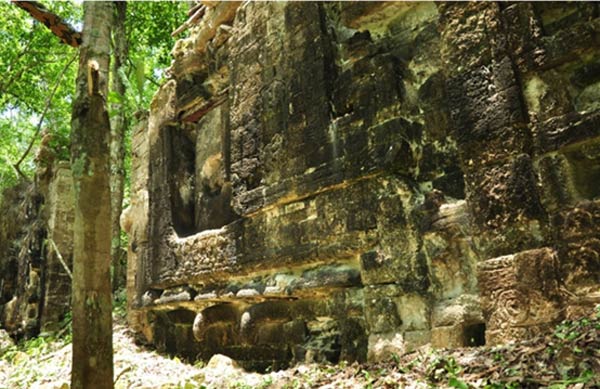Archaeologists Discover Two Long Lost Ancient Maya Cities in Jungle of Mexico
In an amazing new discovery in the jungles of Mexico, archaeologists have uncovered two ancient Mayan cities, including ruined pyramid temples, palace remains, a monster mouth gateway, a ball court, altars, and other stone monuments, according to a new release by Discovery News. One of the cities had been found decades ago but all attempts to relocate it had failed. The other city was previously unknown and is a brand new discovery, shedding new light on the ancient Mayan civilization.
Expedition leader Ivan Sprajc, of the Research Center of the Slovenian Academy of Sciences and Arts (ZRC SAZU), explained that the finding was aided by aerial photographs of the tropical forest of central Yucatan in the state of Campeche, Mexico. Some anomalies were noticed among the thick vegetation of the forest and so a team was sent in to investigate further.
Archaeologists were stunned to discover an entire city in an area between the Rio Bec and Chenes regions, extending some 1,800 miles, which are characterised by their Classic architecture dating to around 600 to 1,000 AD.
Although the city had originally been found by the American archaeologist Eric Von Euw in the 1970s, who produced records and drawings of the ancient Mayan ruins, the location was lost and all attempts to relocate the city, which he named Lagunita, had been unsuccessful until now.
One of the most impressive features of the Mayan city is the enormous monster-mouth entranceway (depicted in the featured image), which represents a Maya earth deity of fertility. "These doorways symbolize the entrance to a cave and, in general, to the watery underworld, place of mythological origin of maize and abode of ancestors," Sprajc told Discovery News.
Beyond the entranceway, Sprajc and his team came across a large temple pyramid measuring 65 feet (20 metres) in height, as well as the ruins of a palace complex arranged around four large plazas. Nearby, they found numerous stone sculptures and several altars, all engraved with well-preserved reliefs and inscriptions.

The remains of a temple pyramid in the ancient Mayan city of Lagunita. Credit: Ivan Sprajc / Discovery News
One of the inscriptions has been analysed by epigrapher Octavio Esparza Olguin from the National Autonomous University of Mexico, who revealed that the hieroglyphics record the date of 29 th November, 711 AD and refer to a “lord of 4 k’atuns” (a k’atun is a 20-year period). However, unfortunately the section of text which would have referred to the name of the ruler is not clear enough to be read.

The hieroglyphic inscription dated to 29 th November, 711 AD. Credit: Ivan Sprajc / Discovery News
Even more stunning than the rediscovery of Lagunita, was the fact that Sprajc and his team also stumbled across another set of ancient ruins nearby, which were previously unknown, including a pyramid temple, altar, and large acropolis surrounded by three temples. It’s structures resemble another Mayan city, which they have now named Tamchen (‘deep well’), after finding more than thirty chultans, deep underground chambers used for collecting rainwater.
Although it appears that the two cities existed at the same time for at least some of their existence, there is evidence that Tamchen may have been created before Laguinita, with some structures linked to the Late Pre-Classic period (300 BC – 250 AD).

Stone structure from the previously unknown city, which has since been named ‘Tamchen. Credit: Ivan Sprajc / Discovery News
Sprajc explained that both cities “open new questions about the diversity of Maya culture, the role of that largely unexplored area in the lowland Maya history, and its relations with other polities."
Featured image: One of the cities featured an extraordinary facade with an entrance representing the open jaws of an earth monster. Credit: Ivan Sprajc / Discovery News


















Comments
Attention to the Stg. Major by a Stg. Master
God save the Queen
H.M.H. Royal Navy
".....mythological origin of maize and the abode of ancestors...."
Drop "mythological" and what are we left with?
Amazing! :)
this is so exciting!! this is one of my favorite areas!
love, light and blessings
AB
Brave serbian(croatian,slovanian,monte-negro,bosnian does not metter) guy,keep it up,thank you!
Pages